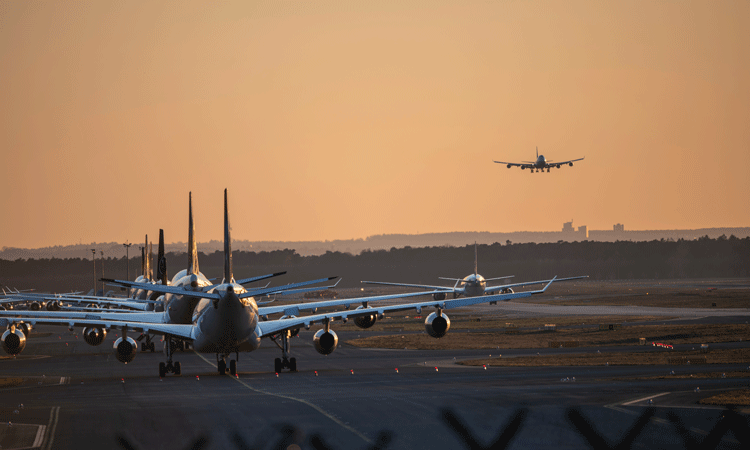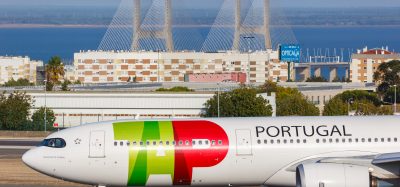European air connectivity recovery incomplete and uneven
- Like
- Digg
- Del
- Tumblr
- VKontakte
- Buffer
- Love This
- Odnoklassniki
- Meneame
- Blogger
- Amazon
- Yahoo Mail
- Gmail
- AOL
- Newsvine
- HackerNews
- Evernote
- MySpace
- Mail.ru
- Viadeo
- Line
- Comments
- Yummly
- SMS
- Viber
- Telegram
- Subscribe
- Skype
- Facebook Messenger
- Kakao
- LiveJournal
- Yammer
- Edgar
- Fintel
- Mix
- Instapaper
- Copy Link
Posted: 24 June 2022 | International Airport Review | No comments yet
Airports Council International Europe has published the ‘Airport Industry Connectivity Report for 2022’, which reveals that the recovery of European air connectivity from the pandemic remains difficult.


On the eve of its 32nd Annual Congress and General Assembly (22 June 2022), Airports Council International Europe (ACI Europe) published the ‘Airport Industry Connectivity Report for 2022‘, which reveals that the recovery of European air connectivity from the COVID-19 pandemic is uneven and still difficult. This reflects the combination of yet not fully lifted travel restrictions, the impact of the war in Ukraine and structural changes in the aviation market.
The results are telling in terms of the true nature of recovery from a traveller perspective – it is a more complex measure than simple flights or passenger numbers. The different indexes used measure the full extent of the air connectivity available from every European airport in terms of destinations and the direct and indirect flights available through hubs. They also measure the connectivity enabled by hub airports.
Total air connectivity still back at 2009 levels
More than two years into the COVID-19 pandemic, and despite an upsurge in passenger volumes this Summer 2022, total air connectivity across the European airport network still remains, which is 29 per cent below pre-pandemic (2019) levels. This means as of June 2022, air connectivity in Europe is back to where it was in 2009 – when the Great Recession hit.
However, this hides significant divergences between national markets, with Greece being the only country having now achieved a full recovery in its air connectivity, closely followed by Turkey (- three per cent).
Amongst larger EU+ markets, Spain (-23 per cent) is best performing, followed by the UK (-28 per cent), Italy (-32 per cent) and France (-34 per cent). Germany (-39 per cent) comes last.
At the other end of spectrum, Ukraine has lost all of its air connectivity and Russia’s (-62 per cent) and Belarus’ (-78 per cent) air connectivity are clearly hit by international sanctions.
Direct connectivity vs. indirect/hub connectivity
While direct connectivity is finally getting closer to pre-pandemic levels at -15 per cent, indirect connectivity and hub connectivity still stands much behind at -36 per cent and -34 per cent respectively. This reflects the distinctive patterns of the recovery in air traffic, which has been driven by leisure/VFR demand and fuelled by ultra-LCCs’ capacity expansion, and with travel restrictions still remaining in place (to varying degrees) on many intercontinental markets.
In particular, while direct connectivity within Europe now stands at -16 per cent compared to pre-pandemic (2019) levels, direct connectivity between Europe and Asia Pacific remains less than half (-52 per cent) what it used to be.
A structural shift that looks set to stay
One of the report’s notable finding is that the European market has experienced a structural shift, with Low-Cost Carriers (LCCs) now accounting for 40 per cent of direct air connectivity, up from 27 per cent pre-pandemic (2019). Full Service and other carriers’ share has decreased from 73 per cent to 60 per cent.
Faster direct connectivity recovery for smaller and regional airports
Small and regional airports (Group 4 category – less than five million passengers) have recovered connectivity faster but their future gains are more uncertain. The report shows that whilst 33 per cent of them (had recovered their pre-pandemic direct connectivity levels as of June 2022, only one of the largest airports ((Group 1 category – more than 25 million passengers)) had done so – Palma de Mallorca, which serves primarily an intra-European tourist market.
Amsterdam Schiphol, Istanbul, and London Heathrow best for direct connectivity
In absolute terms, Amsterdam Schiphol (AMS) (-10 per cent) this year again holds the top spot in terms of direct connectivity, followed by ever resilient Istanbul (IST) (- five per cent), and London Heathrow (LHR) (-13 per cent) climbing back up from the seventh position to the third compared to last year (2021).
TAKE A READ:
Europe’s airports post two year high in recovering passenger traffic
Europe’s airports and ground handlers discuss complex challenges
Lisbon (LIS) (- four per cent), Athens (ATH) (- six per cent) and Istanbul Sabiha Gokcen (SAW) (- six per cent) have almost recovered their pre-pandemic direct connectivity, and London Gatwick (LGW) (- eight per cent) and Dublin (DUB) (- seven per cent) are also coming close, having rejoined the top 20 league after dropping off last year (2021).
Top 20 global hub connectivity league dominated by European airports
In terms of hub connectivity, European Major hubs (-26 per cent) showed significantly more resilience than both secondary hubs (-51 per cent) and niche and small hubs (-35 per cent), thanks to the critical mass of their based network airlines and their diversified route network.
At the global level, European airports are back on top of the league this year (2022). Nine out the top 10 airports for hub connectivity are from Europe.
Frankfurt (FRA) (-29 per cent) has regained its pre-pandemic (2019) position as the top global airport for hub connectivity. Istanbul comes to the second position, having actually increased its hub connectivity by +11 per cent compared to pre-pandemic (2019), followed by Amsterdam Schiphol (-33 per cent), which also regains the third position it held before the pandemic.
This is a reversal of the 2021 standings, when the closure of most intercontinental markets had resulted in North American airports dominating the top 20 league of global hubs in 2021, thanks to their reliance on a vast and largely unconstrained domestic market.
Europe’s air connectivity: an essential element of economic competitiveness and social cohesion
Olivier Jankovec, Director General of ACI EUROPE commented: “COVID-19 accelerated the changes in the market landscape for airports, where competitive pressures are increasing across the board as we see footloose carriers, which today includes both the ultra-low cost carriers and also the low-cost brands of network carriers, intensively bargain with airports.
“This report is a crucial part of the jigsaw as we recover. Europe’s air connectivity is an essential element of both its economic competitiveness and social cohesion. With both societal and regulatory pressures on aviation, ensuring an understanding of the value of air connectivity by all our partners is important.”
This points also to the importance of ensuring that slot allocation rules reflect the connectivity needs of airport communities, while ensuring fair and open market opportunities, Jankovec added.
Related topics
Airside operations, COVID-19, Economy, Passenger experience and seamless travel, Passenger volumes, Route development, Tourism
Related airports
Amsterdam Airport Schiphol (AMS), Athens International Airport (ATH), Dublin Airport (DUB), Frankfurt Airport (FRA), Istanbul Airport (IST), Istanbul Sabiha Gokcen International Airport (SAW), Lisbon Airport (LIS), London Gatwick Airport (LGW), London Heathrow Airport (LHR)


















